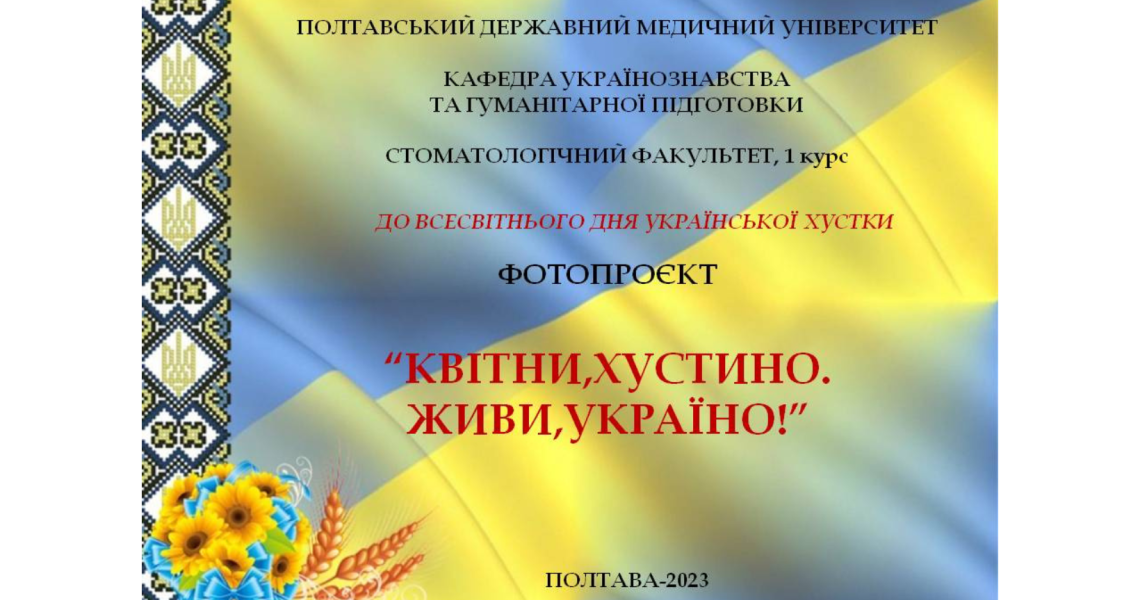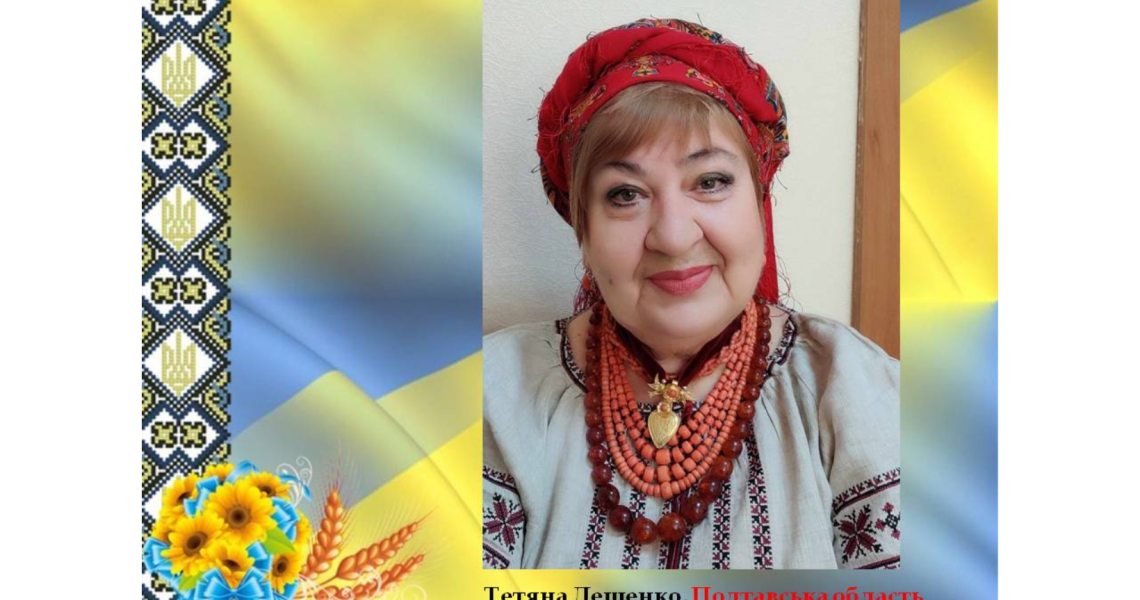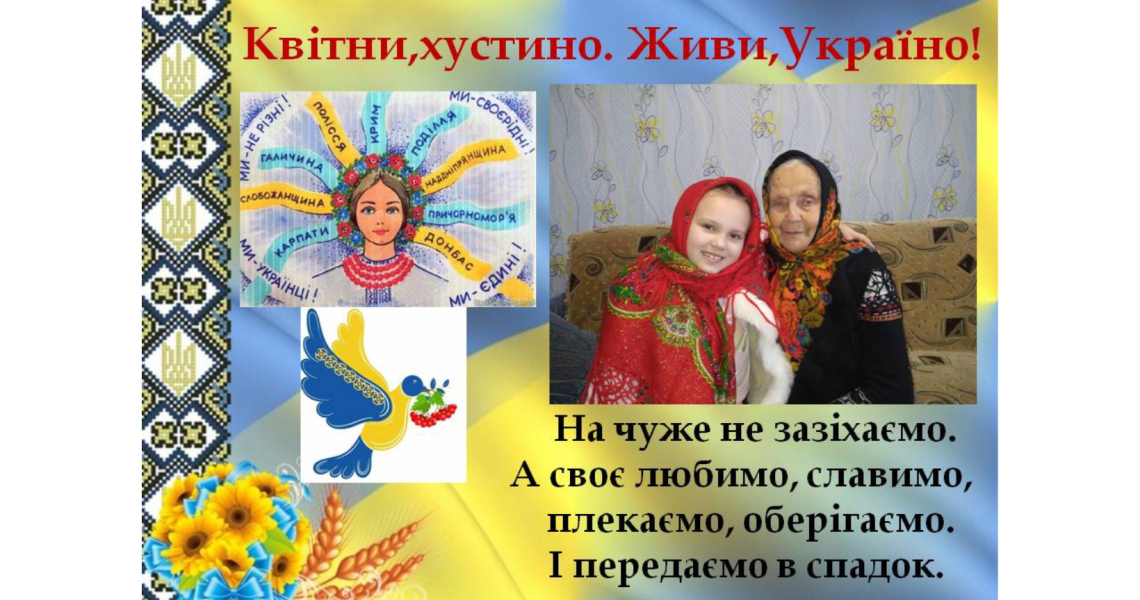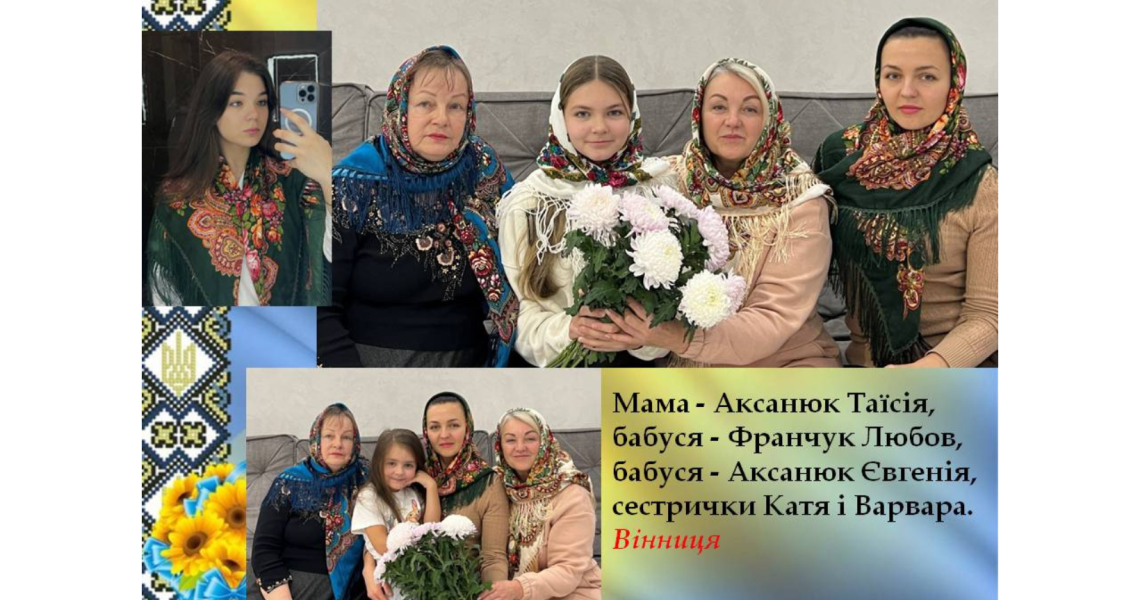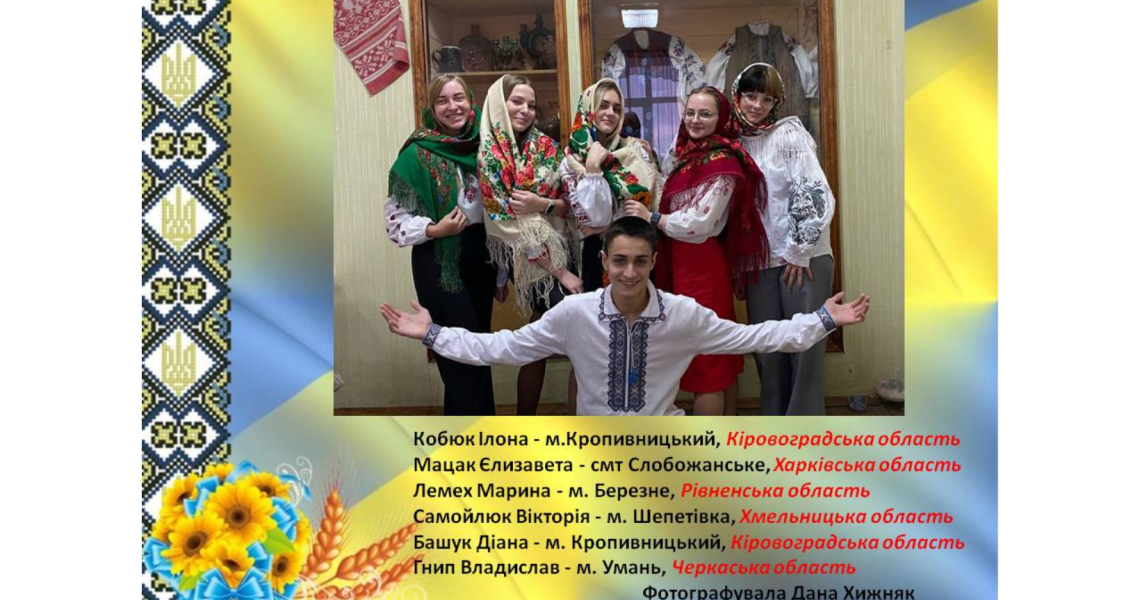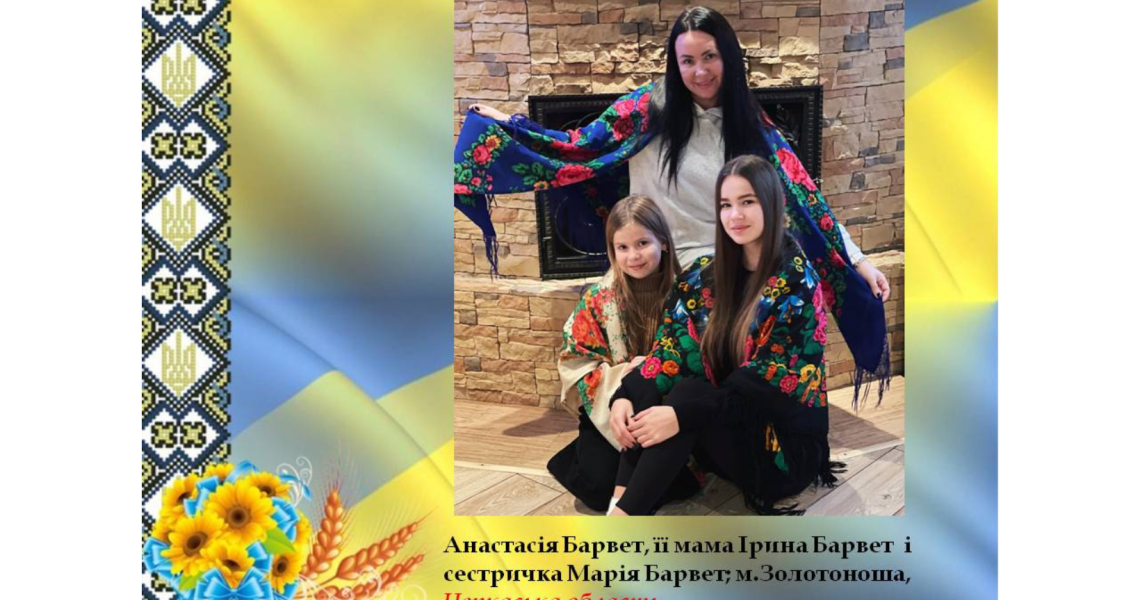На кафедрі українознавства та гуманітарної підготовки ПДМУ до Всесвітнього дня української хустки, який відзначають 7 грудня із 2019 року, уже традиційно створено масштабний фотопроєкт. Цьогоріч, у час тяжкого воєнного лихоліття, – під об’єднавчою назвою «КВІТНИ, ХУСТИНО. ЖИВИ, УКРАЇНО!» Ідея, комунікація, дизайн, організація й виконання – завідувачка кафедри Тетяна Лещенко. Однодумці – студентки і студентки 1 курсу стоматологічного факультету родом із 25 областей і міст України, які навчаються в Полтавському державному медичному університеті.
Хустку в Україні здавна вважали оберегом і символом патріотизму, свободи й любові. Перші хустки, які почали носити українки, мали чистий білий колір. Дівчата й жінки в давнину носили хустку впродовж усього року. При цьому вона була обов’язковим головним убором заміжньої жінки й ознакою її соціального стану; молодиці носили білі або яскраві хустки, старші жінки – темні, вдови – чорні. Вона також свідчила і про рівень достатку родини, адже заможні жінки покривали голову хустками з дорогих тканин, бідні – із дешевших.
Із часом хустка перетворилася з елемента жіночого вбрання в національний символ, звісно, змінюючи свій вигляд, адже кольорові принти, візерунки й орнаменти прийшли до нас у ХХ столітті з Туреччини. Автентичні давні хустини нині можна побачити хіба що в етнографічних експозиціях музеїв. Але і у ХХІ столітті, закономірно трансформуючись крізь віки, жіноча хустка для українців залишилася оберегом, символом об’єднання жіночих поколінь, передавання хустки від матері до доньки як цінності, плекання українських традицій і звичаїв. Тому вже багато десятиліть поспіль ми ідентифікуємо такі хустки як українські радше не за місцем їх виготовлення, а за тим, що їх незмінно люблять українки, які не цураються споконвічних, ментальних традицій.
Тепер молоде свято набуває поширення і за кордоном, адже багато українок через війну були змушені полишити рідні домівки. Ідею Всесвітнього дня української хустки підтримали громадські активістки в усьому світі. Так, навіть уперше, 2019 року, свято відзначали в США, Іспанії, Канаді, Латвії, Португалії, Казахстані, Йорданії, Індії.
Кафедра висловлює глибоку вдячність усім учасникам проєкту: першокурсникам і першокурсницям стоматологічного факультету, їхнім бабусям, мамам, сестрам і сестричкам, родичкам і землячкам, які підтримують і зберігають українські традиції по всій території єдиної України й за кордоном.
To the World Day of the Ukrainian Headscarf
At the Department of Ukrainian Studies and Humanities at PSMU, a massive photo project has traditionally been created in anticipation of the World Day of the Ukrainian Headscarf, celebrated on December 7 since 2019. This year, during challenging times of war, it is held under the unifying title " FLOURISH, HEADSCARF. LIVE, UKRAINE!" and the idea, communication, design, organization and execution are all led by the Head of the Department, Tetiana Leshchenko. Like-minded participants are first-year students of the Faculty of Dentistry originating from 25 regions and cities of Ukraine, studying at Poltava State Medical University.
In Ukraine, the headscarf has long been regarded as an amulet and a symbol of patriotism, freedom and love. The initial headscarves worn by Ukrainian women were of pure white color. In ancient times, girls and women wore headscarves throughout the year. It was a mandatory headwear for married women and an indication of their social status. Maidens wore white or bright headscarves; older women wore darker ones and widows wore black. The headscarf also conveyed the family's wealth, as affluent women covered their heads with headscarves made of expensive fabrics, while less privileged women wore cheaper ones.
Over time, the headscarf transformed from a mere element of women's attire into a national symbol. Naturally evolving over the ages, it changed its appearance with the introduction of colored prints, patterns and ornaments from Turkey in the 20th century. Authentic ancient headscarves can now be seen primarily in the ethnographic exhibits of museums. Yet, even in the 21st century, the women's headscarf remains an amulet and a symbol of the unity of female generations, the passing down of the headscarf from mother to daughter as a cherished tradition, and the nurturing of Ukrainian customs and traditions. For decades, these headscarves have been identified as Ukrainian not so much by their place of manufacture but by the fact that Ukrainian women consistently cherish these age-old, mental traditions.
Nowadays, this young holiday is gaining popularity abroad, as many Ukrainian women were forced to leave their homes due to the war. The idea of the World Day of the Ukrainian Headscarf has been embraced by public activists worldwide. For the first time in 2019, the holiday was celebrated in the United States, Spain, Canada, Latvia, Portugal, Kazakhstan, Jordan and India.
The Department expresses profound gratitude to all project participants: first-year students of the Faculty of Dentistry, their grandmothers, mothers, sisters, relatives and compatriots who support and preserve Ukrainian traditions across the entire territory of Ukraine and beyond.






